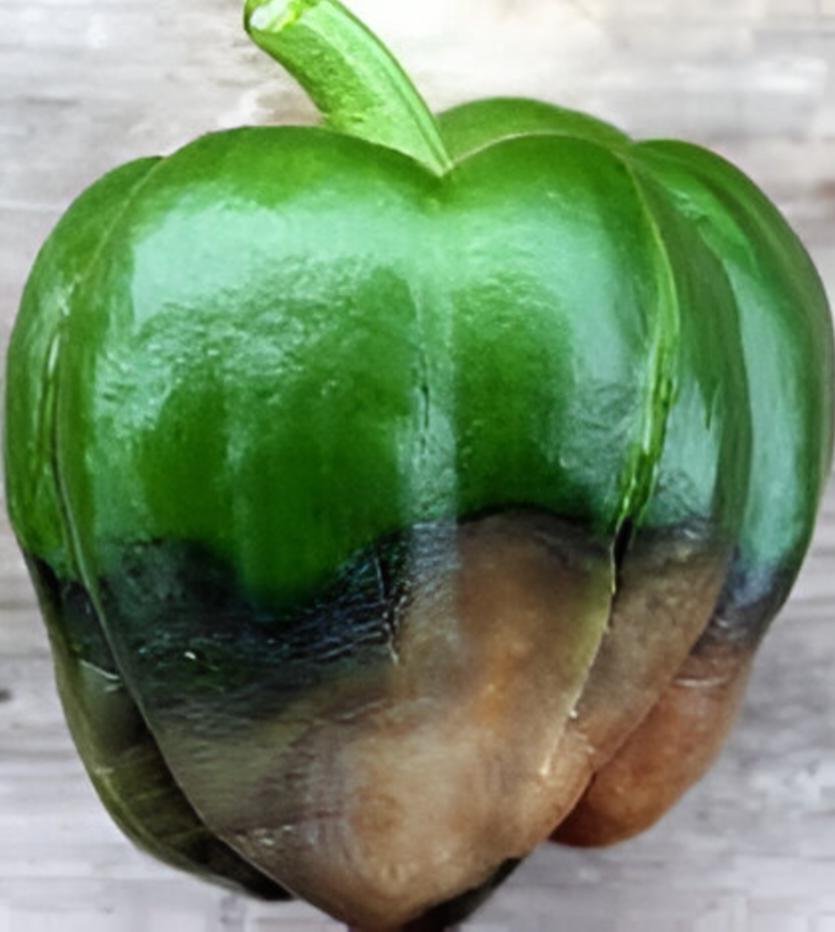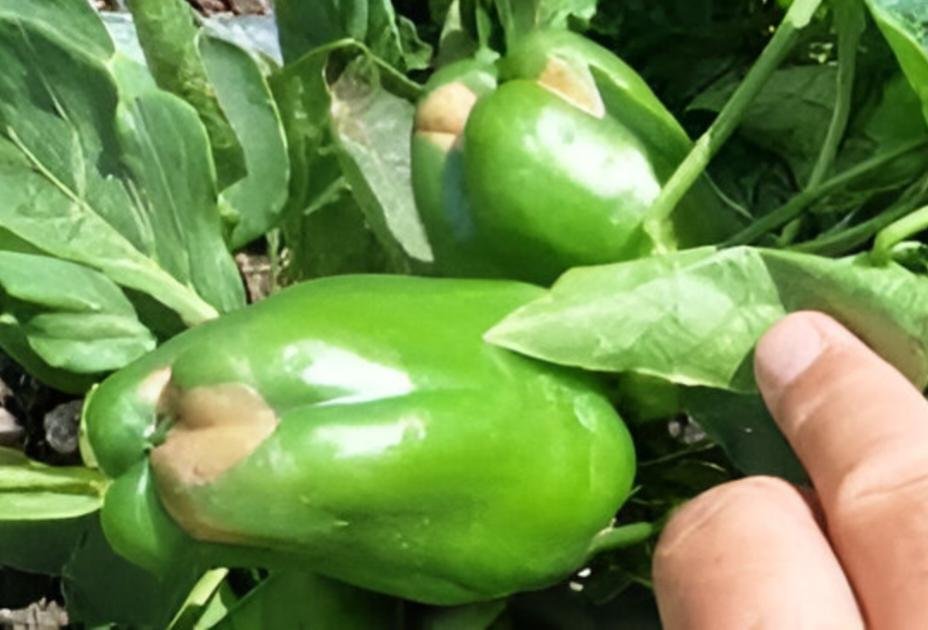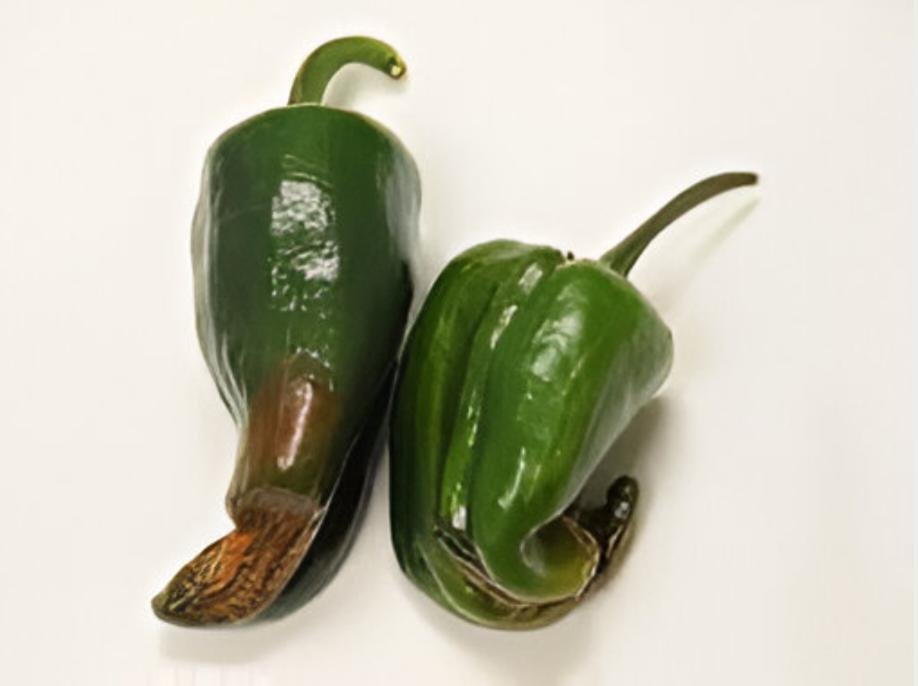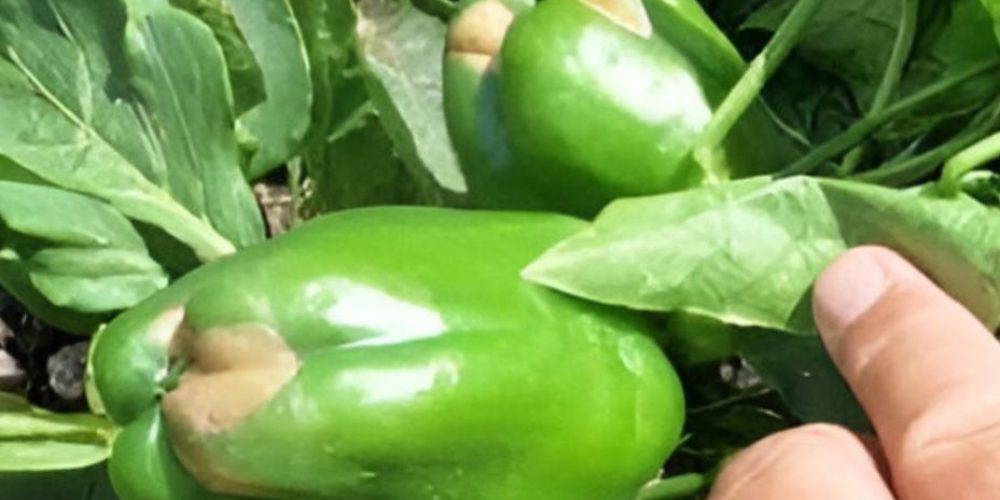Table of contents of the article
Toggle
Blossom end rot disease in pepper is considered one of the most important diseases that causes a physiological defect in the fruits, which reduces the quantity and quality of production. In this article on your website, World of Plants, we will discuss the symptoms of this disease and methods of control to preserve the pepper crop.
Symptoms of blossom end rot in pepper
Blossom end rot can be identified by the appearance of irregularly shaped spots on the lower end of the fruit. The sizes and colors of the spots also vary. In the initial stages of the disease, the spots appear light green, then their color begins to turn brown or black as the fruit approaches maturity. This leads to the fruit’s texture losing its consistency, so the spots appear sunken and the lower end of the fruit takes on a flat appearance. In the case of internal rot, it is black in color and no external symptoms may appear on the fruit.
Organic control of blossom end rot in pepper
You can add materials rich in calcium, such as mossy limestone, basalt powder, burnt lime, dolomite, agricultural gypsum, or lime residue, to the soil to enrich it with calcium.
Chemical control of blossom end rot in pepper
Always consider an integrated approach with preventive measures combined with biological treatments if available. You can also spray the leaves with calcium chloride as an emergency and temporary measure, but it is not preferable to spray it for long periods or in large quantities.
The cause of blossom end rot in pepper
Blossom end rot is a physiological disease resulting from a lack of calcium in the tissue of fruits, and there is no living organism that causes it. Calcium maintains the strength and consistency of the fruit. Calcium deficiency may occur as a result of its lack of availability in the soil or the plant’s inability to absorb and transport it within the plant until it reaches the fruits. This causes damage to the fruit's tissues and shape, and then sunken black spots appear on the lower surface of the fruit. Sometimes, irregular irrigation or injuries to the roots cause the plant to fail to absorb calcium, which leads to the appearance of symptoms of blossom end rot.
The cause of blossom end rot in pepper
- You must ensure that the plant receives regular irrigation during dry periods. You must also avoid excessive irrigation and ensure that there is a good system for draining excess irrigation water into the field.
- The roots must also be avoided while working in the field.
- Ensure good fertilization, low nitrogen content and high calcium content.
- It is also recommended to use nitrate as a source of nitrogen instead of ammonium.
- As well as controlling soil pH levels through agricultural liming.
- You can also use mulch to maintain soil moisture.
- The incidence of this disease increases if...
- Lack of ground moisture.
- Low calcium level.
- Increased magnesium level, perhaps because excess magnesium leads to decreased calcium absorption.
Symptoms of blossom end rot in pepper
Symptoms appear in the form of a decomposed, leathery area in the pink end of the fruit. It is initially watery in appearance, then dries up and takes on a grayish-brown color and is leathery in texture. The severity of infection increases in fruits that were initially set, as plants whose root growth is still limited.
Controlling blossom end rot disease in pepper
- Planting or growing seedlings relatively deep in the soil.
- Avoid disturbing the roots while hoeing, especially when fruiting begins.
- Pay attention to regular irrigation.
- Good fertilization with calcium
In conclusion, we would like to note that we, at the world of plants website, offer you all the necessary services in the world of plants, we provide all farmers and those interested in plants with three main services::-
- Artificial intelligence consulting service to help you identify diseases that affect plants and how to deal with them.
- Blog about plants, plant diseases and care of various crops ... You are currently browsing one of her articles right now.
- An application that provides agricultural consultations to clients, as well as a service for imaging diseases and knowing their treatment for free – Click to download the Android version from Google Play Store، Click to download the IOS version from the Apple App Store.


Sources




